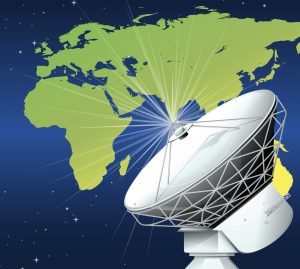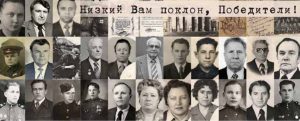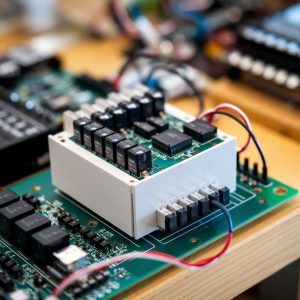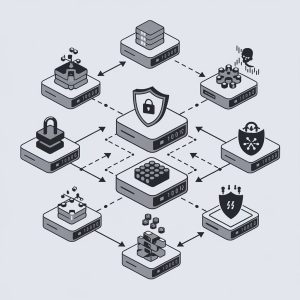Items of № 6, 2024
PROSPECTS FOR UTILIZING THE 694-790 MHZ DIGITAL DIVIDEND
A.A. Zaharov, The M.I. Krivosheev Radio Research & Development Institute ( NIIR), deputy director general, associate professor, Ph.D.; zaharovaa@niir.ru
E.E. Devyatkin, NIIR, director of the center for advanced wireless communication technologies research, Ph.D.; devyatkinee@niir.ru
A.A. Mochenov, NIIR, head of laboratory; mochenovaa@niir.ru
The current use of the 694-790 MHz radio frequency range and possible promising applications in the implementation of mobile communication networks of the fourth and fifth generations are considered. The composition of organizational and technical measures for the modernization of broadcasting networks in order to further release the specified range of radio frequencies is given.
Keywords: digital dividend, radio frequency range 694-790 MHz, terrestrial broadcasting networks, LTE networks, 5G.
RESEARCH OF LATENT SPACE QUANTIZATION METHODS OF VARIATIONAL AUTOENCODER FOR FPV VIDEO STREAM FRAMES. PART I
А.A. Berezkin, Bonch-Bruevich Saint-Petersburg State University of Telecommunications (SPbSUT), associate professor, Ph.D.; berezkin.aa@sut.ru
A.A. Chenskiy, SPbSUT, masters student; chenskii.aa@sut.ru
R.V. Kirichek, SPbSUT, rector, professor, Dr.Sci.(Tech.); kirichek@sut.ru
A.A. Zaharov, The M.I. Krivosheev Radio Research & Development Institute (NIIR), deputy director general, associate professor, Ph.D.; a.zaharov@niir.ru
One of the ways to improve the efficiency of mobile and hybrid orbital-terrestrial communication networks used to transmit video stream frames when controlling unmanned aerial vehicles (UAVs) in first person view (FPV) mode is to reduce the required bandwidth for each UAV. This requires ensuring a high degree of frame compression while maintaining their quality. To solve this problem, methods based on the application of variational autoencoders that perform frame encoding into the latent feature space of the neural network, quantization and lossless compression are used. The first part of this paper presents modified quantization/dequantization algorithms that facilitate more efficient compression of the latent feature space of a variational autoencoder.
Keywords: variational autoencoder, quantization, data compression, neural networks, latent space, video stream compression.
CLUSTER STABILITY IN DYNAMIC FOG COMPUTING
A.N. Volkov, The Bonch-Bruevich Saint-Petersburg State University of Telecommunications (SPbSUT), department of communication networks and data transmission, associate professor, Ph.D.; artemanv.work@gmail.com
This article aims to study dynamic Fog computing in the architecture of integrated networks 2030 and telepresence services for remote areas. The problem of ensuring the stability of a computing cluster in dynamic Fog computing, in conditions of device mobility, is considered.
Keywords: network 6G, IMT-2030, network of networks, Fog computing, telepresence services.
RESEARCH OF LATENT VIDEO STREAM COMPRESSION METHODS FOR FPV CONTROL OF UAVs
А.A. Berezkin, Bonch-Bruevich Saint-Petersburg State University of Telecommunications (SPbSUT), associate professor, Ph.D.; berezkin.aa@sut.ru
A.A. Chenskiy, SPbSUT, masters student; chenskii.aa@sut.ru
R.V. Kirichek, SPbSUT, rector, professor, Dr.Sci.(Tech.); kirichek@sut.ru
A.A. Zaharov, The M.I. Krivosheev Radio Research & Development Institute (NIIR), deputy director general, associate professor, Ph.D.; a.zaharov@niir.ru
This paper examines the use of variational autoencoders for transferring the latent space obtained by processing individual frames of a video stream. It is devoted to the research of how effectively different algorithms can compress quantized latent space of variational autoencoder VQ-f16 from Stable Diffusion repository. The system of quantized latent space compression algorithms efficiency indicators and their description are presented. A comparative analysis of the efficiency of quantized latent space compression algorithms is conducted. The results of analyzing the efficiency of quantized latent space compression algorithms are presented and recommendations for improving their efficiency are given.
Keywords: variational autoencoder, data compression, neural networks, latent space compression, video stream compression.
METHODOLOGY OF TRAFFIC PRIORITIZATION IN SATELLITE COMMUNICATION CHANNELS BASED ON ARTIFICIAL INTELLIGENCE. PART I. EVALUATION OF TRAFFIC TRANSMISSION DELAY
Ph.H. Do, Bonch-Bruevich Saint-Petersburg State University of Telecommunications (SPbSUT), postgraduate; haodp@dau.edu.vn
A.A. Berezkin, SPbSUT, associate professor, Ph.D.; berezkin.aa@sut.ru
A.V. Borodko, SPbSUT, associate professor, Ph.D.; borodko.av@sut.ru
R.V. Kirichek, SPbSUT, rector, professor, Dr.Sci.(Tech.); kirichek@sut.ru
This study introduces an approach for constructing satellite communication networks based on artificial intelligence to improve the efficiency of satellite communication by dynamically predicting and prioritizing traffic. For transmission over satellite communication networks, user traffic is organized into queues with priority according to the assigned priority levels for each type of traffic. The first part of the article presents a detailed mathematical model for predicting, assigning priorities, and measuring the performance of the transmission of a satellite communication network. The comparative analysis demonstrates potential improvements over traditional traffic transfer approaches in terms of delay reduction.
Keywords: satellite communication, artificial intelligence, QoS, traffic prioritization.
EVALUATION OF THE EFFICIENCY OF A DISTRIBUTED MULTI-ZONE ARCHITECTURE OF A SATELLITE COMMUNICATION NETWORK WITH UAV
G.V. Chechin, Moscow Aviation Institute (MAI), associate professor, Ph.D.; chechin.gen@mail.ru
V.E. Kolesnichenko, MAI, head of laboratory, Ph.D.; valkoles@rambler.ru
The article deals with the issues of increasing the throughput capacity of the satellite communication network and evaluation of efficiency of application of different types of antenna systems on board of geostationary satellite-repeater for organization of exchange with unmanned aerial vehicles. A comparative analysis of the capacity of upstream and downstream communication channels using single- and multi-beam onboard antenna systems was carried out. The obtained results allowed to determine the areas of effective application of different variants of on-board radio complex in the case of using a single-beam antenna with one global beam and multi-beam antenna with several fixed narrow beams and with beam hopping.
Keywords: satellite communication system, geostationary communications satellite, unmanned aerial vehicle, UAV, onboard radio complex, radio channel capacity, single-beam antenna, multibeam antenna with fixed beams, beam hopping.
STATISTICAL CHARACTERISTICS OF TWO-DIMENSIONAL AUTOCORRELATION FUNCTIONS OF SPREAD SPECTRUM SIGNALS
Sh.D. Vu, Moscow Technical University of Communication and Informatics, postgraduate; vusydaomtusi@gmail.com
A technique has been developed for calculating and analyzing the statistical characteristics of the side peaks of two-dimensional and auto- and cross-correlation functions of spread spectrum signals, defined as surfaces in threedimensional space with coordinates corresponding to frequency and time. The essence and novelty of the technique is to establish for any two-dimensional correlation function of a signal the relationship between the values of its side peaks, as well as the parameters of their distribution function, with the power spectral density of the original signal, calculated from its implementation of finite duration, and, ultimately, with the characteristics of the side peaks of various one-dimensional autocorrelation functions of the pseudo-random sequence on the basis of which it is formed. The result of this approach is the established quantitative relationships between the statistical characteristics of the side peaks of the two-dimensional correlation function of a complex signal with the length of the pseudo-random sequence corresponding to it, depending on its type.
Keywords: two-dimensional autocorrelation functions, uncertainty function, side peaks of the autocorrelation function, M-sequences, Gold codes, statistical characteristics.
МETHODS FOR INCREASING REVENUE FROM INTERNATIONAL VOICE TRAFFIC AND IMPROVING INTERCONNECT BALANCE
A.V. Lazaryan, independent expert; arsen.lazaryan@gmail.com
This scientific research is devoted to new, field-tested methods for identifying GSM gateways to reduce revenue losses for telecom operators. Options for further evolution of detection methods using machine learning methods are considered. The work is based on an analysis of best international practices and many years of experience of the author. The article is practical and applied in nature and can be used as recommendations for telecom operators when developing a strategy to identify international voice traffic passing through the Internet in order to reduce revenue loss.
Keywords: GSM gateway, SIM-box, detection algorithms, revenue, loss of revenue, interconnect, cellular communication.
SIMULATION OF THE INFLUENCE OF FLICKER NOISE ON THE CHARACTERISTICS OF THE OUTPUT CLOCK SIGNAL OF A CONTROLLED GENERATOR
D.K. Mazurenko, The M.I. Krivosheev Radio Research & Development Institute (NIIR), leading researcher, Ph.D.; dm.ma2010@yandex.ru
D.A. Palcin, NIIR, head of research center; palcin@niir.ru
A.S. Fen, NIIR, head of department; fen@niir.ru
A.V. Fedorov, Saint-Petersburg branch FSBI NIIR – LONIIR, head of department; fav2k@yandex.ru
M.L. Schwartz, Moscow Technical University of Communications and Informatics, head of department, Ph.D.; mschwartz@smsync.ru
A simulation model of the influence of flicker noise on the fluctuation of the output clock signal is proposed, and numerical simulation results are presented
Keywords: simulation modeling, power spectral density, sync signal, phase deviation, time interval deviation.
THE INTEGRATED CIPHER FOR PROTECTING COLOR IMAGES: A HYBRID ALGORITHM WITH ELLIPTIC CURVES AND DES OR 3DES
A. Basel, Moscow Technical University of Communications and Informatics, postgraduate; baselabood@Hotmail.com
This paper proposes a new hybrid encryption algorithm for color images, combining elliptic curve method and DES algorithm. The algorithm is presented in three variants: using elliptic curves with standard DES, two-key 3DES, or three-key 3DES. Experimental evaluations with three color images of different sizes were conducted to determine the performance and security of the proposed algorithm. Experimental results demonstrate the improved security and efficiency properties of the proposed algorithm.
Keywords: elliptic curves, data encryption standard (DES), triple DES (3DES), public key cryptography, ECDH, elliptic curve DiffieHellman, color image, encryption, decryption, HKDF, HMACbased extract-and-expand key derivation function.









